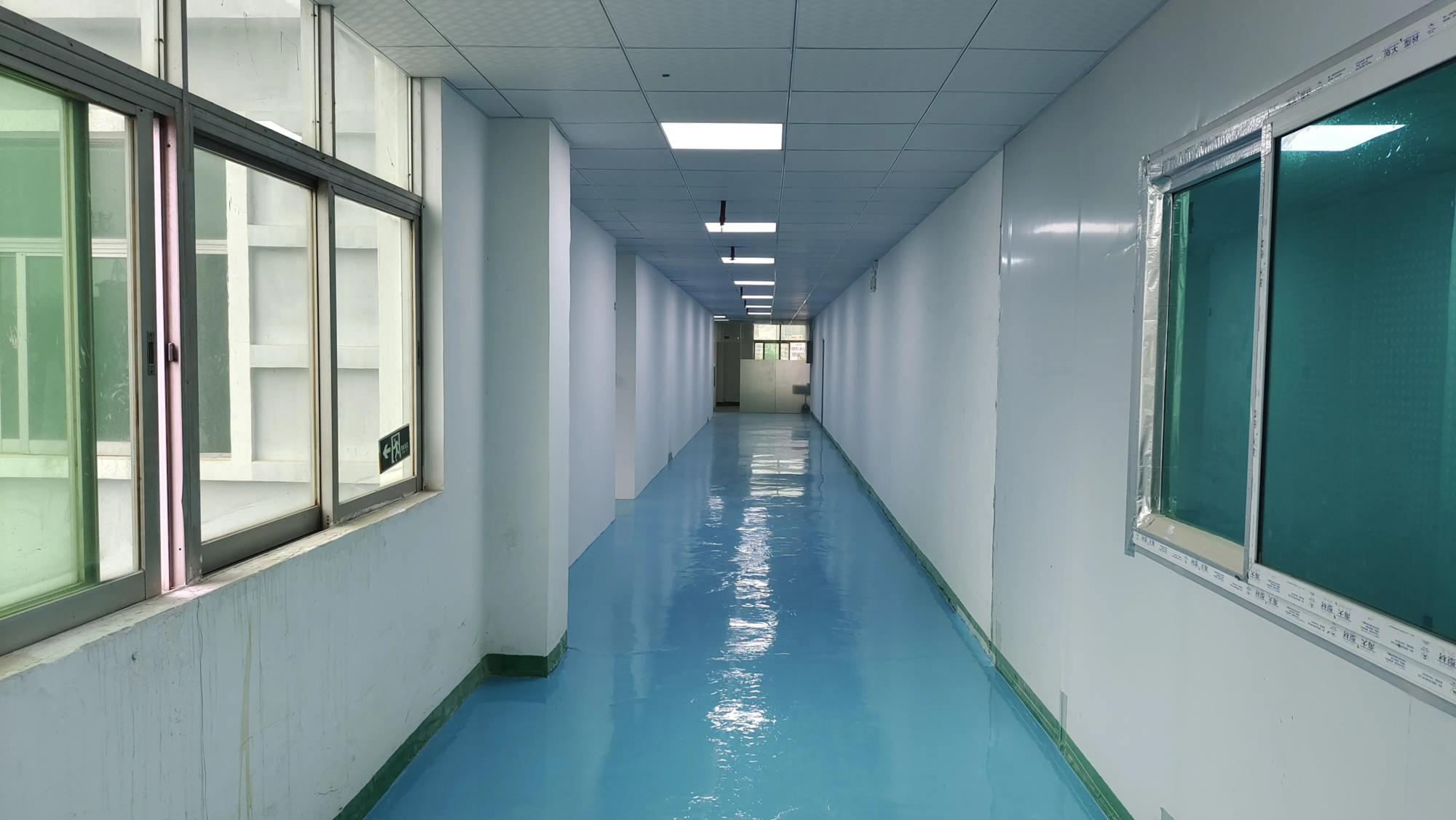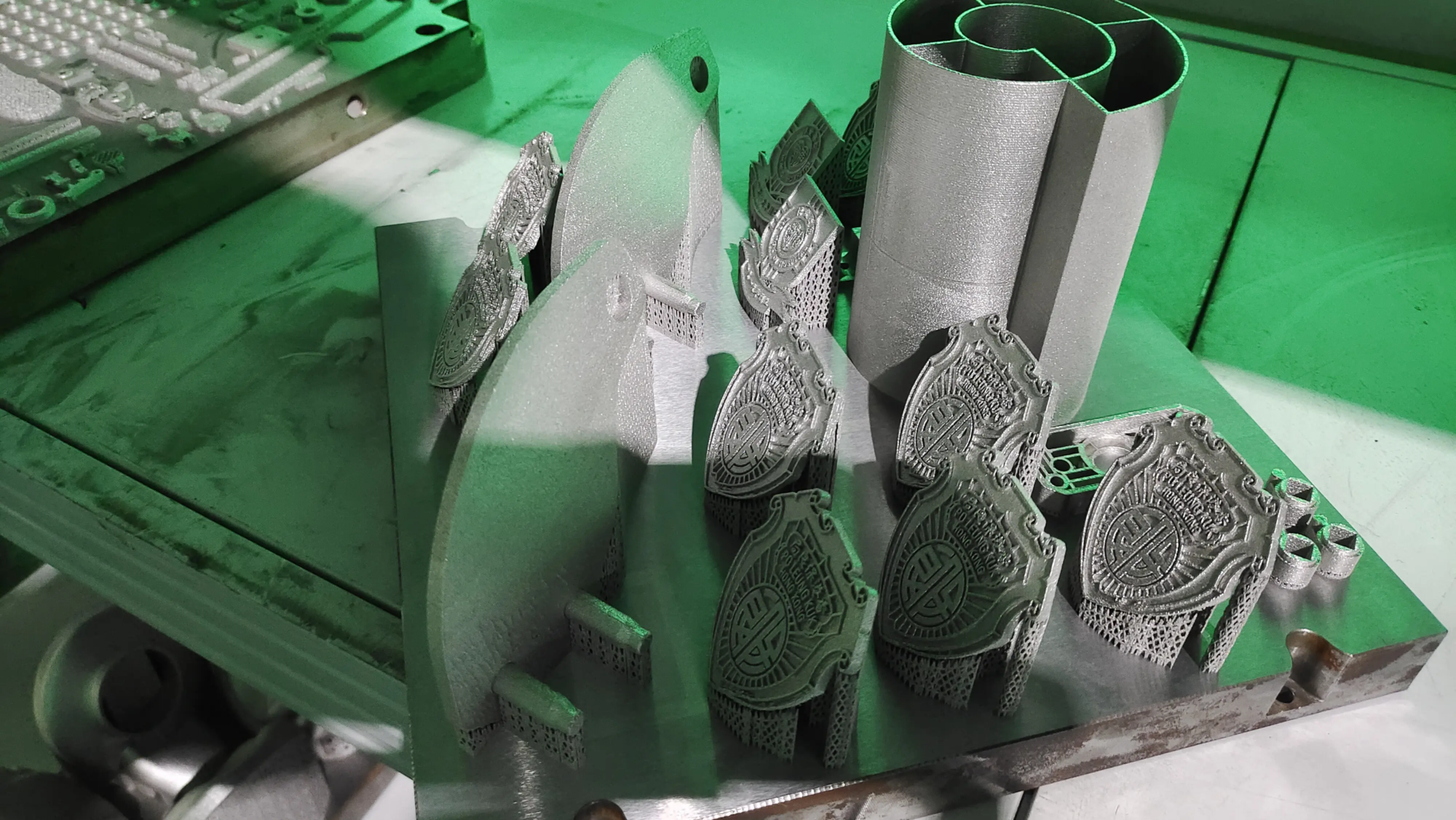Master the art of 3D printing presses: Your guide to perfect tolerance
Compression fit is the cornerstone of mechanical design – those elegant, without fixed connections, parts are secured together purely by elastic interference between components. Think of bearings relying on housing, pulleys fixed to the shaft or gears that are directly mounted. Achieving perfect media fit through traditional manufacturing is a challenge. With 3D printing, especially metal AM, it becomes a complex dance that requires in-depth understanding. At Greatlight, we use cutting-edge SLM technology to demand rapid prototyping applications every day, and mastering the tolerances of news fit is part of our core expertise.
This guide delves into the nuances of designing and printing parts using reliable media. Forget the general rules; we are talking about practical practical tips based on the reality of additive manufacturing.
Why pressing 3D printing is tricky (it’s not just a printer!)
Before researching solutions, understanding barriers is key:
- Shrink variables: Unlike subtraction processing, the size begins to grow and shrink, and 3D printing is built layer by layer. The metal cools and solidifies, inevitably shrinks. Software compensation try To solve this problem, the number and uniformity of shrinkage depend heavily on partial geometry (thin walls vs. thick parts), construction direction, support structure (and its removal), specific alloy characteristics and laser parameters. This inherent unpredictability makes hitting the exact target dimension more difficult.
- Anisotropy: Parts are different in all directions or are dimensionally stable. The layer-by-layer nature of SLM and other processes means that properties vary on the X, Y, and Z axes. Under pressing pressure, the perpendicularly printed holes may behave differently than the horizontally printed holes.
- Surface roughness: Approximate metal surfaces (especially in complex internal features such as holes) are highly coarse than machined. This RA (roughness average) value is not just texture – it greatly affects Effective put one’s oar in. High roughness can significantly increase insertion force and wear during assembly, sometimes even masking the expected interference.
- Residual stress and distortion: Heat-intensive processes such as SLM induce internal stress. These can lead to subtle twists back Printing (even during post-processing, such as support measures or heat treatment), does not predictably change the critical dimension. This is especially problematic for tight tolerances such as media fitting.
- Creep (especially for polymers): Although our SLM focus is metal, it is worth noting that the thermoplastics used in FDM or SLS will squirm under constant pressure, which may relax the pressure over time.
Conquer the Challenge of Tolerance: Basic Tips for Greglight
With these challenges in mind, here’s how to achieve consistent, reliable pressure with 3D printed parts:
1. Design intention is crucial:
- Tolerance specification: Don’t just write "Press FIT." Specify Required The interference clearly fits your drawings (e.g. Ø10H7/s6 or specifying upper/lower limit). This defines the functional requirements.
- Materials Important: Clearly defined Both Mating parts. The elastic modulus (stiffness), yield strength and coefficient of thermal expansion (CTE) are crucial. The aluminum shaft pressed into the titanium hole needs to be calculated differently from the steel on the steel. As with your AM partner, discuss material choices early.
- Absolute and relative sizes: priority Where Tolerance is crucial. The relative distance between key features (e.g., hole center to center) is usually more accurate on SLM printers than absolute size, such as the single hole diameter measured from the edge of the build board. Corresponding dimensions.
2. Understand the printer’s process functions (CPK):
- Don’t guess, measure! Before designing the final media to fit the critical application, test Specific printer capabilities for the materials and orientations you have selected. Print small test coupons (virtual axes and holes) and use a calibrated needle or hole design for precise measurements.
- Feature shrinkage: Greatlight usually calibrates its SLM device to understand its specific shrinkage curves for a variety of materials and geometries. This data is used to offset the CAD model forward Printing (a process commonly known as "compensation" or "Zoom"). Understand your partner’s process ability.
- Direction optimization: Discuss the construction direction with your AM service provider. hole Roundness Probably the best when printing vertically Target dimension Stability may favor different directions depending on the expected shrinkage pattern. Horizontal holes usually exhibit different shrinkage characteristics than vertical holes. This is where Greatlight’s experience becomes priceless.
3. Design a perfect print fit:
- Rules of thumb? Be careful to trample: Suggestions for imitation "0.2% interference" It is a dangerous starting point. it high Depends on the hardness of the substance, size, geometry of the mating part, and surface roughness. Use it only for initial, very rough estimates, and then perfect. It is crucial that "rule" Usually based on Processing Element. The surfaces printed in the current period require a lot of adjustments.
- Size is important: Due to the powder particle size and melt cell dynamics, very small holes are very challenging for accurate diameter control of AM. Generally, the larger the diameter, the easier it is to achieve reliable tolerances. For holes with diameters <3-5 mm, compact fitting becomes more difficult.
- Surface finish specification:
- first aid: Accept roughness, but Increase Target interference to compensate (usually significant). Prepare for higher insertion force and potential swing. Best for non-critical fits or places where disassembly is not required.
- Specify post-processing: This is great Strong advice For the critical pressure. Processing (rotating, boring, honing) post-printing of mating surface:
- Achieved upper surface finish (lower RA).
- Provides tighter and predictable diameters.
- Improve roundness and cylinder.
- Removes hard surface size or partially sintered particles.
- result: Then you can use standard More confidence is given by fitting tables and calculations designed for machining components. Pay this extra factor ahead of time. Our CNC machining capabilities are specifically integrated for this purpose.
- Relief function: On the entry and shaft of the hole, cast Chamfers (at least 15-30 degrees) or radius are incorporated on the entry and shaft of the hole to guide assembly and prevent shearing of higher sprint surfaces. If you print trapped voids (for example, internal blind holes require drainage paths), use the escape hole to remove the powder.
- Interference level guidance (considering caution and post-processing): As a starting point only For small and medium-sized parts (typical SLM prototypes), assume the compartment mating surface of the hole/axis:
- Tap the fit: 0.001" -0.002" Diameter per inch (0.001 mm/mm -0.002 mm/mm). For alignment or light loads, easy assembly/disassembly.
- Medium fit: 0.002" -0.003" Diameter per inch (0.002 mm/mm -0.003 mm/mm). The most common are bearings, gears, bushings. It requires moderate force to assemble.
- Heavy massage: 0.003" -0.005+" Diameter per inch (0.003 mm/mm -0.005 mm/mm). For permanent components or extremely high torque transmission. Requires a large amount of force/pressure equipment, and the parts may be generated locally during assembly If it is misaligned. Size and material strength are crucial.
- Surface warning for first aid: For the surface no After the game, you may need Increase Due to the Us backbone interference of rough surfaces, these interferences increased by 25-50% or more (and thoroughly tested!) to achieve comparable holding power.
4. Testing and iteration: Not negotiable
- Prototype is suitable: Never make critical news fits based solely on the first print. Multiple iterations of budget, especially when using ASPRED surfaces or pushing dimension/tolerance boundaries. Print simple shaft and hole test pieces with predetermined interference.
- Thorough measurement: Use proper metrology – calibrated micron, pore gauge, pin gauge. Remember the thermal effects; measure at a stable room temperature.
- Test components: Actual assembly of parts. If possible, measure the insertion force. Check for cracking, excessive deformation, looseness or gecko. Test functional requirements (e.g., torque transfer, pull-out force).
Conclusion: Precision journalism is suitable for demand expertise
By-fitting in metal 3D printing is a seemingly simple concept that can quickly reveal its complexity. Success depends on a holistic approach that goes beyond common rules and adopts a data-driven approach that takes into account materials science, SLM process complexity, precise design intent, and the key role of post-processing. although "first aid" For some applications, the key components that can achieve truly reliable, predictable results almost always involve integrating precise machining into the workflow.
At Greatlight, this comprehensive approach – combining state-of-the-art SLM printing with in-house CNC machining, grinding and grinding – is the foundation of our rapid prototype service. We understand the subtle interactions between powder, laser, geometry and pressure. We calibrate, measure, test, and iterate with our customers to provide a fit interface that meets functional needs for precision and reliability. Don’t let tolerate headaches reduce your innovation cycle. Use expert AM knowledge to make your press fit for the first time, or iterate quickly to perfection.
FAQ: Print by 3D
Q: What is the proper good starting interference for a 3D printing press?
Answer: Yes No Common "OK" The starting point due to complexity. Avoid simple percentage rules. Start with your functional requirements (torque, disassembly requirements) and materials. If the mating surface is post-effect, use a standard machining fitting table such as H7/P6 Light Press or H7/S6 Mediver Press as a guide. For the surface of course, a large amount is expected to be needed higher Interference with these tables suggested (maybe more than 25-50% more), but prototyping and testing are absolutely mandatory. Start small and iterate.
Q: Can I rely on fitting the news on the surface of the moment?
A: It depends on the application. For non-critical, static parts or temporary components, higher insertion forces and potential accumulation can be accepted, perhaps. But, It is highly recommended to use reliability, predictable performance, consistent insertion force, ease of assembly or any dynamic load, which is usually essential on the mating surface. Otherwise, the roughness can cause obvious unpredictability.
Q: How does the direction of the part affect the compression?
A: Direction affects shrinkage mode, residual stress distribution and achievable dimensional accuracy/roundness. The vertical hole may be rounder, but the horizontal hole may experience a different contraction from Z along the X/Y axis. Support interactions can also locally twist the holes. Based on their process knowledge, discuss the best orientation for specific hole sizes and locations with the AM provider.
Q: Why do I need an escape hole?
A: When designing a closed or blind pressure slot or hole, powder cannot be removed during printing. This leads to sintering, incomplete dimensional accuracy, poor surface quality inside the pore, destroying the expected fit. The escape hole provides a path for uninserted powder that can flow out during or after the construction process. They are essential for internal functions.
Q: How does Greatlight ensure accurate fit?
A: We combine several key practices:
- Extensive SLM process calibration and characterization of shrinkage.
- Exquisite print preparation software (used by MAGICS) applies precise compensation.
- Inside, precise CNC machining (milling, turning, grinding, grinding) to complete the critical mating surface with exact specifications.
- Use strict quality control of calibration metrology.
- Deep materials and process expertise to guide design decisions.
- Iterative prototypes when pushing boundaries. Our one-stop shop integration is essential for this control.
- Q: Can I apply pressure to plastics like nylon or ABS?
A: Yes, but the considerations are very different from metals. Focus on material flexibility and creep. Common methods include:
- Snapshot: Design specific compatible features for deflection and locking.
- Living hinges: Thinner flexible sections allow assembly.
- Radii & Chamfers: It is essential to help assemble without breaking.
- Material selection: Select materials with lower creep for permanent assembly. Interference requires careful calibration, as plastics are more likely to deform under stress than metals. Always test long-term holding strength.
3D printed news fit can be achieved through informed design, material understanding, leveraging expert AM service providers such as Greatlight, and receiving necessary post-processing and iterative testing. It turns potential frustration into a reliable, elegant engineering solution.





